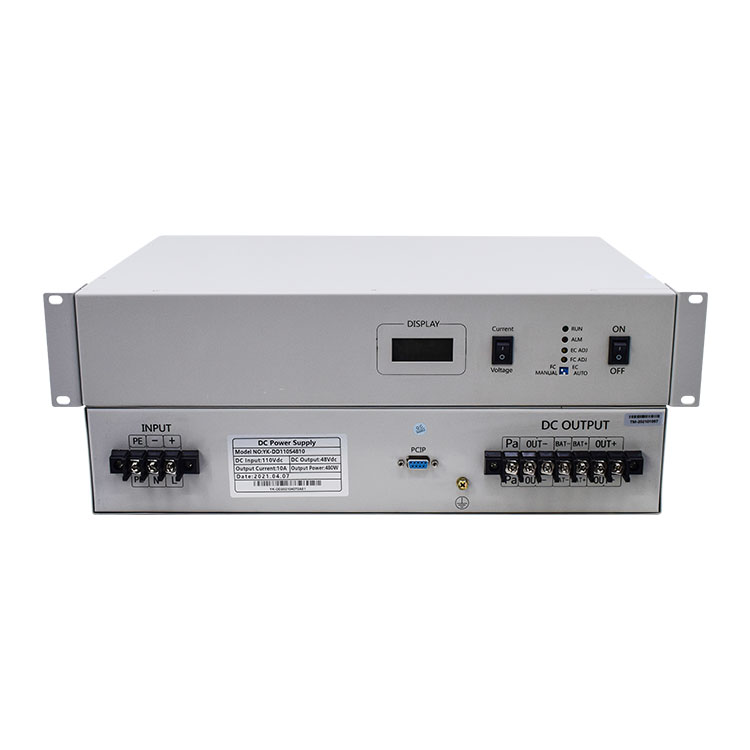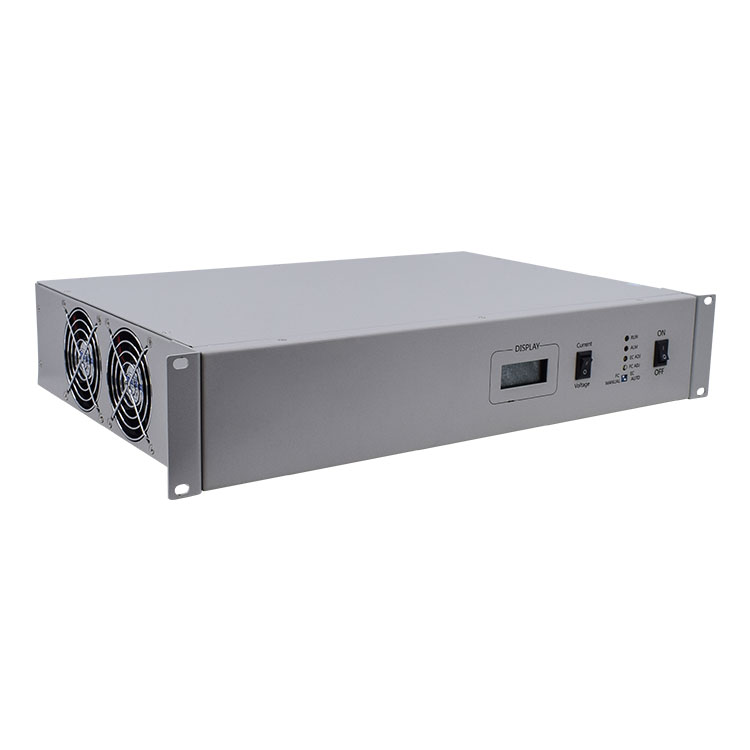News
Exploring the World of Switching Power Supplies: From Basics to Advanced Topologies
Click: 683 Date: 02/27/2024 3::38::39 PM
Exploring the World of Switching Power Supplies: From Basics to Advanced Topologies
Switching power supplies represent a distinct category of power supply technology that operates fundamentally differently from linear power supplies. At the heart of this distinction lies the conversion method employed, which significantly influences their efficiency, size, and overall performance.
Definition and Purpose: Switching power supplies are a type of power supply that converts input power from a source, such as AC mains, into a different voltage or current level for use by electronic devices. They are designed to convert power from one form to another, often from AC to DC, in a highly efficient manner. The primary purpose of these supplies is to provide a stable and efficient source of power for electronic devices, ensuring they receive the correct voltage and current levels necessary for their operation.
Technology Behind Switching Power Supplies: The core technology behind switching power supplies involves the use of high-frequency switching elements, typically transistors, to rapidly switch between sourcing power and not sourcing power. This rapid switching allows the power supply to convert power at high frequencies, significantly reducing energy losses through heat dissipation. The efficiency achieved through this method is a key advantage of switching power supplies over linear power supplies, which dissipate excess power as heat due to their continuous operation.
How Switching Power Supplies Differ from Linear Power Supplies: Linear power supplies work by regulating the current through a load, without changing the voltage, which can lead to inefficiencies and increased power loss. In contrast, switching power supplies use high-frequency switching to convert input voltage to the desired output voltage, making them more efficient and compact. This efficiency is crucial for applications requiring a high degree of power conversion, such as in portable electronic devices, where space and power efficiency are paramount.
Elimination of Energy Loss: One of the most significant advantages of switching power supplies is their ability to eliminate energy loss through heat dissipation. By operating at high frequencies, these power supplies minimize the power that is wasted as heat, leading to higher overall efficiency. This efficiency not only reduces the amount of power wasted but also decreases the size and weight of the power supply, making it more suitable for portable and compact applications.
In summary, switching power supplies are a critical technology in the realm of power supply design, offering advantages in efficiency, size, and performance over traditional linear power supplies. Their use of high-frequency switching technology enables them to convert power with minimal energy loss, making them ideal for a wide range of electronic devices where efficiency and compactness are essential.
The efficiency of Switching Power Supplies (SPS) is a key factor in their appeal over linear power supplies. SPSs achieve higher efficiency by employing switching regulators that convert electrical power more efficiently. This is achieved through the continuous switching of the pass transistor between full-on and full-off states, minimizing the time spent in high dissipation transitions, which results in less wasted energy. This efficiency is particularly beneficial in applications where battery life or power quality is a critical factor, such as in portable devices and industrial applications requiring improved thermal management .
The advantages of SPSs over linear power supplies are not limited to efficiency. They are also typically smaller and lighter, thanks to the smaller size and weight of the transformers used. This compact size and reduced weight make SPSs ideal for use in a wide range of applications, including powering personal electronics like computers and mobile devices, as well as industrial equipment and medical devices .
In addition to their compact size and efficiency, SPSs offer several other advantages. They have lower standby power loss compared to linear power supplies, making them more energy-efficient even when not in use. Furthermore, SPSs can tolerate a wide range of power frequencies and voltages, making them versatile for various applications .
Despite these advantages, SPSs are not without their challenges. They are more complex than linear power supplies, which can lead to increased design complexity. Additionally, if not properly designed, SPSs can generate high-amplitude, high-frequency energy that requires careful suppression to avoid electromagnetic interference (EMI). This complexity and the need for EMI suppression are important considerations in the design and application of SPSs .
In summary, the efficiency, compact size, and versatility of Switching Power Supplies make them an attractive choice for a wide range of applications, from personal electronics to industrial and medical equipment. However, their complexity and the need for careful design to mitigate EMI are important factors to consider.
The design and components of Switching Power Supplies (SPS) are integral to their operation, efficiency, and reliability. Here's a revised and rephrased explanation based on the provided sources:
Modular Designs and Efficiency: SPSs often utilize modular designs to enhance their efficiency and flexibility. This approach allows for the integration of various components and technologies that can be tailored to specific power conversion requirements. The modular nature of SPSs contributes to their compact size and lighter weight compared to linear power supplies, as highlighted by the smaller and more efficient transformers used in SPSs, which operate at high frequencies .
Critical Components and Their Roles: Key components in SPSs include rectifiers, transformers, regulators, and filters. Rectifiers convert AC to DC or vice versa, transformers step up or down the voltage levels, regulators maintain the output voltage within a specified range, and filters minimize electrical noise. The interplay between these components is crucial for achieving high efficiency and power quality .
Switching Regulators and Power Factor Correction: Switching regulators are essential for controlling the power conversion process in SPSs. They manage the switching of the power transistor between on and off states, optimizing the power transfer efficiency. Additionally, power factor correction (PFC) techniques are employed to improve the power supply's efficiency further by reducing harmonic distortion in the power system .
Electromagnetic Interference (EMI) Suppression: Given the high-frequency operation of SPSs, managing electromagnetic interference (EMI) is a significant design challenge. EMI suppression techniques, such as the use of low-pass filters and shielding, are employed to prevent electrical noise from interfering with the power supply's performance and to ensure compliance with electromagnetic compatibility standards .
Applications and Topologies: SPSs are versatile and find applications across various domains, including personal computers, mobile phone chargers, and industrial power distribution. The choice of SPS topology, such as buck, boost, flyback, or forward converters, depends on the specific requirements of the application, including power efficiency, size, weight, and input-output voltage levels .
Conclusion: The design principles and components of Switching Power Supplies play a pivotal role in their performance, efficiency, and reliability. By understanding and optimizing these aspects, engineers can design SPSs that meet the demands of modern electronic devices while ensuring minimal environmental impact and electrical noise pollution.
Switching power supplies (SMPS) offer several advantages over traditional linear power supplies, including higher efficiency, compact size, lighter weight, and the ability to handle a wide range of input and output voltages. These benefits stem from their ability to switch power transistors efficiently between on and off states, minimizing energy loss and reducing heat generation. This efficiency not only contributes to less heat dissipation but also results in smaller size and lighter weight, making switching power supplies ideal for space-constrained applications such as mobile devices.
However, the use of switching power supplies also introduces certain challenges. The high-frequency switching operations can generate electromagnetic interference (EMI), which requires additional filter components to mitigate. Additionally, the design and manufacturing of switching power supplies require specialized knowledge and expertise to ensure proper performance and safety. The complexity of these designs can make them more complicated than linear power supplies, especially when it comes to the PCB layout and the integration of the required electronics.
Despite these considerations, the advantages of switching power supplies, such as their efficiency, compact size, and versatility, make them a preferred choice for a wide range of applications, from consumer electronics to industrial equipment. As technology continues to advance, the role of switching power supplies in powering future devices and systems is expected to become even more significant, underscoring their importance in the power supply industry.
In the realm of Switching Power Supplies (SMPS), a broad spectrum of topologies exists, each designed to meet specific needs in terms of efficiency, size, and functionality. This section will delve into the categorization of SMPS based on their circuit topologies, highlighting the distinctions between isolated and non-isolated converters. Additionally, it will touch upon the unique characteristics of the quasi-resonant zero-current/zero-voltage switch (ZCS/ZVS) and its pivotal role in minimizing Electromagnetic Interference (EMI).
Isolated and Non-Isolated Converters: The fundamental categorization of SMPS is into isolated and non-isolated converters. Isolated converters provide electrical isolation between the input and output, which is crucial for safety in certain applications. Non-isolated converters, on the other hand, do not offer this isolation, making them suitable for applications where the input and output are inherently at the same potential.
Quasi-Resonant Zero-Current/Zero-Voltage Switch (ZCS/ZVS): The ZCS/ZVS topology stands out for its unique approach to reducing EMI. By employing a quasi-resonant switching strategy, where switch turn-on and turn-off occur at zero current and voltage, this topology ensures essentially lossless switching. This method significantly reduces the hard switching effect that generates EMI. Furthermore, by adjusting the switch timing to occur at valleys in the input voltage waveform, the ZCS/ZVS topology minimizes the generation of high-frequency energy that can cause EMI. This approach not only reduces the overall EMI but also introduces a natural frequency jitter that spreads the RF emissions spectrum, further enhancing EMI reduction.
Switching Frequency: The operating frequency of the SMPS plays a crucial role in its efficiency and size. Higher switching frequencies allow for smaller transformers and smaller inductors, leading to more compact designs. However, the choice of frequency must also consider the potential for EMI generation and the need for efficient heat dissipation mechanisms. Frequencies ranging from several hundred kHz to several MHz are common, with the optimal frequency depending on the specific application and regulatory standards.
Applications and Considerations: SMPS are versatile and find applications across a wide range of products, from personal computers to industrial equipment. Their ability to handle a wide range of input voltages and frequencies, coupled with their high efficiency, makes them ideal for many applications. However, the design complexity and the need for EMI suppression can introduce challenges, especially in commercial designs.
Conclusion: Switching Power Supplies, through their various topologies, offer a spectrum of solutions for power conversion needs. From isolated converters ensuring safety to the ZCS/ZVS topology minimizing EMI, these technologies provide efficient, compact, and reliable power solutions across a broad spectrum of applications. The choice of topology and the design considerations around switching frequency and EMI reduction are critical in optimizing the performance and efficiency of these power supplies.

